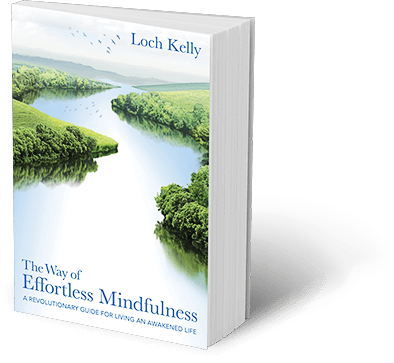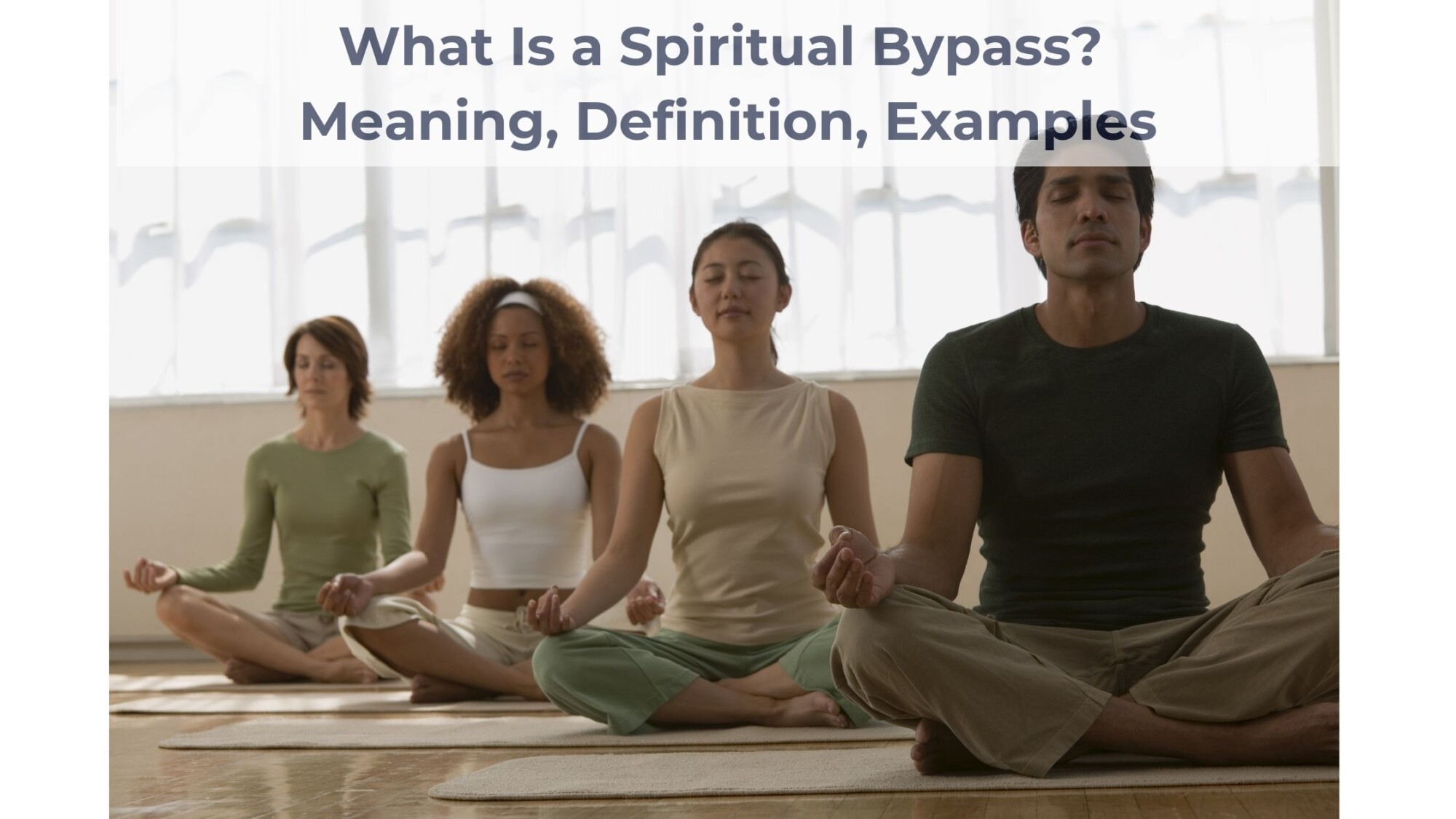The Difference between Mindfulness and Effortless Mindfulness
In the video below, Loch guides you through the difference in experience between deliberate mindfulness, the form of mindfulness traditionally taught in the West, and effortless mindfulness, the next stage of mindfulness practice and mindful living.
How I Discovered Effortless Mindfulness
When I look back at my life, I realize my mindfulness training began when I was quite young, while playing sports and doing art projects in elementary school. My first formal meditation instruction was in Transcendental Meditation (TM) when I was sixteen. During college, I practiced Christian contemplation, attended Quaker meetings, and went on a Zen retreat. When I attended graduate school for a master’s degree in psychology and spirituality, I traveled to Sri Lanka, India, and Nepal on a fellowship to study varieties of meditation and healing. It was during that year, over three decades ago, that I was fortunate enough to be introduced to both deliberate and effortless mindfulness. I started by spending six months in Sri Lanka, at the University of Peradeniya near Kandy, in monasteries and the SMS meditation center practicing vipassana, or insight meditation, from the Theravada Buddhist tradition.
Later, I traveled to India, where I heard the Dalai Lama give a public talk about direct path or essence—traditions in Tibetan Buddhism, called Dzogchen and Mahamudra. He taught that the love and freedom we all seek is already equally within all of us, and there are ways to directly realize awake awareness as their source. I was so moved by his teaching that I enthusiastically raised my hand and asked who I could study this direct path with. He suggested a teacher, Tulku Urgyen Rinpoche in Nepal. I changed my plans and traveled by train, bus, and plane to meet with him at his hermitage on the slopes of the Kathmandu Valley.
It was through this teacher that I first heard the term effortless mindfulness. In his book Rainbow Painting, Tulku Urgyen Rinpoche writes that “there are two types of mindfulness: deliberate and effortless.” He described effortless mindfulness as a simple yet advanced form of mindfulness. He taught that effortless mindfulness is the path to realizing and living from our nature of mind (awake awareness).
When Tulku Urgyen Rinpoche first gave a small group of us effortless mindfulness instructions, it took only a few minutes. Yet I became as calm and clear as after my ten-day deliberate mindfulness meditation retreats in Sri Lanka. But it was also a different type of calm. I felt alert, compassionate, embodied, and energetically connected to everyone and everything. My emotions were more accessible and spacious, and I related to them directly in a loving way. I began to laugh as tears of gratitude flowed down my face. The pervasive feeling of anxiety, self-centeredness, and fear, which had always felt like a normal part of who I was, dissolved. What was here instead was a profound sense of well-being, unity, joy, and gratitude. This full expression lasted through the day and had faded a bit when I awoke the next morning, but it remained in the background, and, more importantly, something fundamental had changed in me.
How Are Mindfulness and Effortless Mindfulness Different?
Because effortless mindfulness is a less familiar approach for most Westerners, it may be easier to understand it in contrast with the more familiar deliberate mindfulness, which is now so widespread that it is what most people call “mindfulness.” It’s important to say that both of these traditions have the same goal of awakening; they are simply different paths up the same mountain.
The practices of deliberate mindfulness are usually taught in the beginning. However, effortless mindfulness can also be taught first, for those who are drawn to it. I have found it takes about the same amount of time to learn as deliberate mindfulness, and when you begin with effortless mindfulness, you still get all the benefits of deliberate mindfulness.
To look more closely at the difference between these two kinds of mindfulness, consider a widely accepted definition of deliberate mindfulness from Jon Kabat-Zinn, one of the important teachers to help bring mindfulness into contemporary culture:
Mindfulness means paying attention in a particular way: on purpose, in the present moment, and nonjudgmentally.
— Jon Kabat-Zinn
Effortless mindfulness is letting go of thoughts, present moments, and attention—opening to a naturally compassionate, nonconceptual awake awareness that is interconnected here and now.
— Loch Kelly
When we compare these two types of mindfulness, we see that there are several significant distinctions between deliberate mindfulness and effortless mindfulness:
- In effortless mindfulness, rather than “paying” attention, we are letting go of attention to receive another kind of awareness, namely awake awareness.
- In effortless mindfulness, rather than paying attention “on purpose,” we are relaxing the goal-oriented mindful meditator to discover a nonconceptual awake awareness that is aware and focused without our help.
- In effortless mindfulness, rather than starting by concentrating or narrowing focus “in a particular way” on an object like our breath, we are opening to awareness as the object and the subject, to discover a spacious, contentless awareness from which we are mindful. Rather than taming the horses of our mind in a small enclosure, we are opening the gate to the field of spacious awake awareness.
- When we shift into effortless mindfulness, rather than trying to create a “nonjudgmental” attitude, we discover that awake awareness is not just neutrally nonjudgmental but is a naturally compassionate dimension of who we are.
- Rather than “paying attention” to an object from a detached mindful witness, effortless mindfulness feels intimately and energetically interconnected with what we’re aware of. Effortless mindfulness is aware of our body, emotions, and thoughts from within and all around.
- Deliberate mindfulness practice actively cultivates the attitude of lovingkindness, whereas in effortless mindfulness, we discover a natural lovingkindness that is already here. This discovery of natural lovingkindness is the foundation of a new motivation for compassionate activity that is not based on external rules but comes from the direct experience of interconnection with all of life.
Can You Be Here Now?
From the perspective of effortless mindfulness, you can’t be in the present moment. Rather than paying attention “in the present moment,” effortless mindfulness means being aware of present moments, coming and going, here and Now. This is a big difference: not trying to be in the moment or even just watching the changing moments that arise and pass. The Now is not the present moment. The Now is not the present time, either. The Now is timeless time that is aware of past, present, and future. The Now does not come and go and treats past, present, and future as similar relative experiences. So, in the Now, we can be aware of the coming and going of present moments while we make plans for the future or recall the past.
This post is an adapted excerpt from my book, The Way of Effortless Mindfulness.









